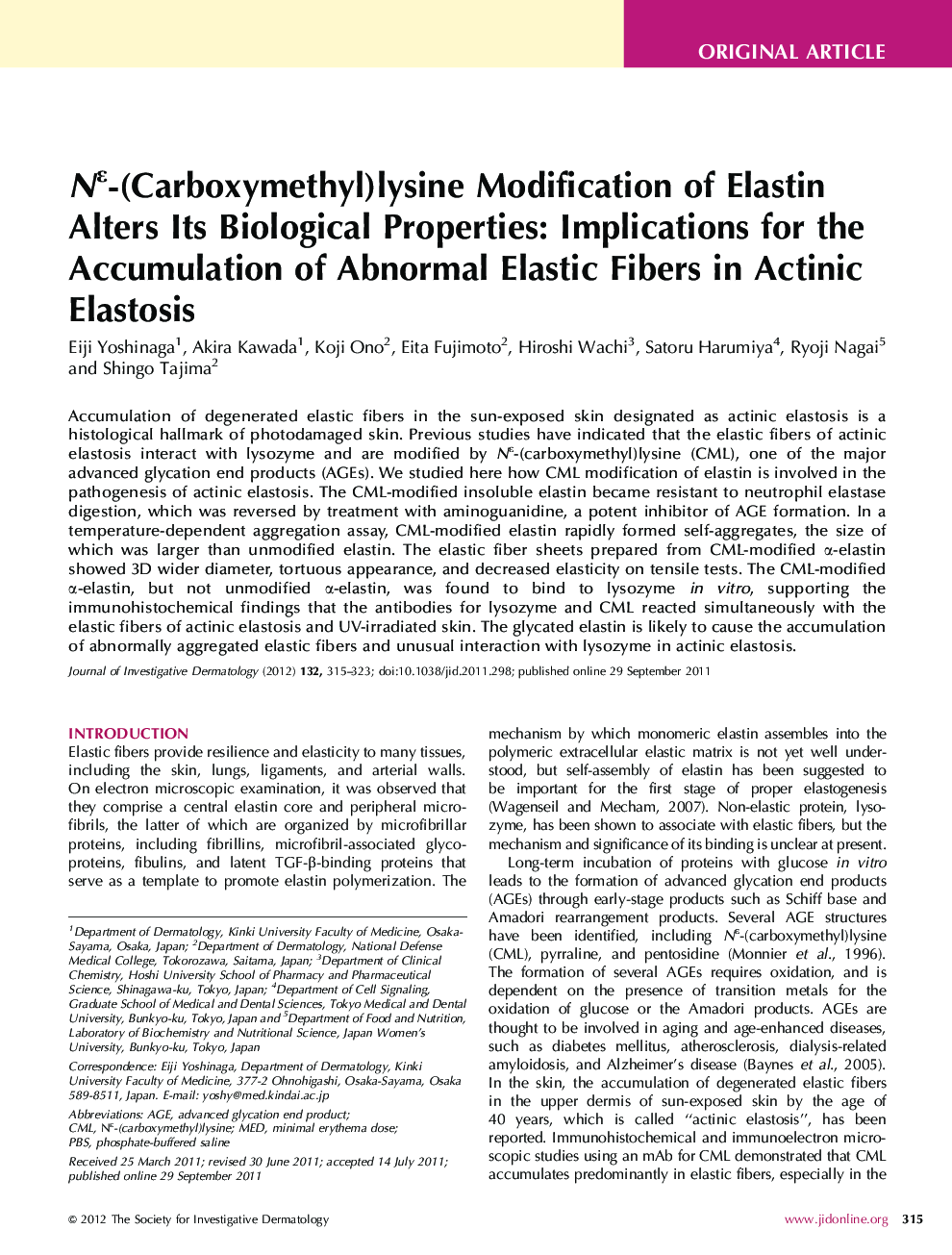| Article ID | Journal | Published Year | Pages | File Type |
|---|---|---|---|---|
| 3216656 | Journal of Investigative Dermatology | 2012 | 9 Pages |
Accumulation of degenerated elastic fibers in the sun-exposed skin designated as actinic elastosis is a histological hallmark of photodamaged skin. Previous studies have indicated that the elastic fibers of actinic elastosis interact with lysozyme and are modified by Nε-(carboxymethyl)lysine (CML), one of the major advanced glycation end products (AGEs). We studied here how CML modification of elastin is involved in the pathogenesis of actinic elastosis. The CML-modified insoluble elastin became resistant to neutrophil elastase digestion, which was reversed by treatment with aminoguanidine, a potent inhibitor of AGE formation. In a temperature-dependent aggregation assay, CML-modified elastin rapidly formed self-aggregates, the size of which was larger than unmodified elastin. The elastic fiber sheets prepared from CML-modified α-elastin showed 3D wider diameter, tortuous appearance, and decreased elasticity on tensile tests. The CML-modified α-elastin, but not unmodified α-elastin, was found to bind to lysozyme in vitro, supporting the immunohistochemical findings that the antibodies for lysozyme and CML reacted simultaneously with the elastic fibers of actinic elastosis and UV-irradiated skin. The glycated elastin is likely to cause the accumulation of abnormally aggregated elastic fibers and unusual interaction with lysozyme in actinic elastosis.
